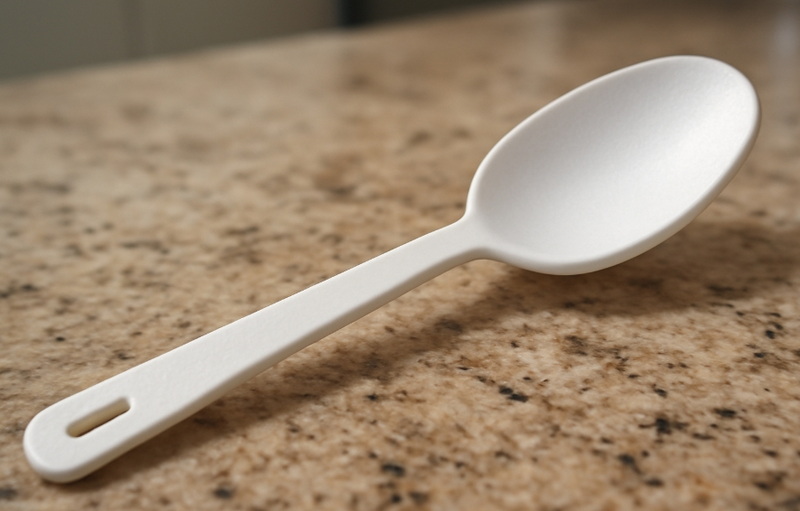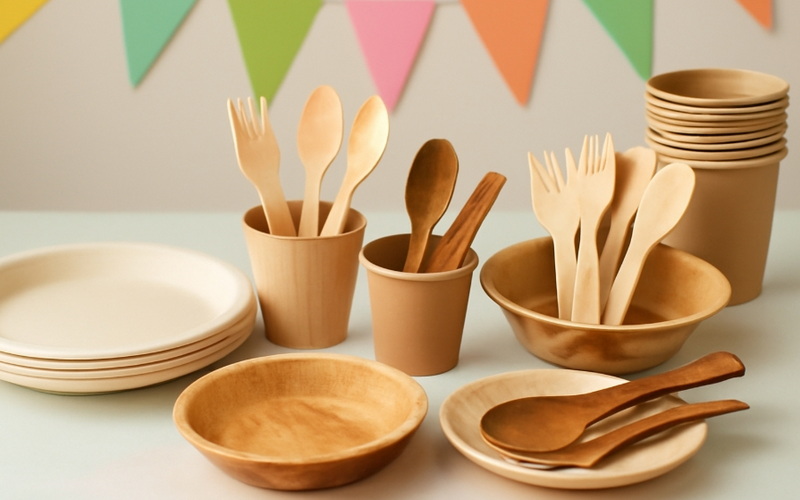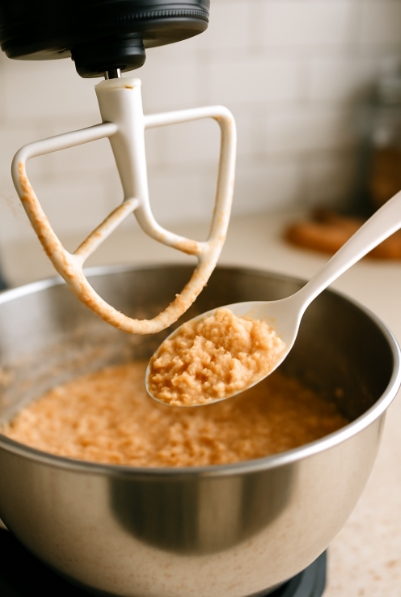
Content Menu
● What Is a Disposable Mixer Arm with Spoon?
● The Importance of Food Safety in Disposable Utensils
>> Why Food Safety Matters
>> How Disposable Utensils Contribute to Safety
● Material Matters: What Is Your Disposable Mixer Arm with Spoon Made Of?
>> Common Materials Used
>> Safety Concerns with Different Materials
>> Regulatory Standards
● Proper Handling and Storage of Disposable Mixer Arms with Spoon
>> Storage Best Practices
>> Handling Protocols
>> During Use
● Environmental and Practical Considerations
>> Environmental Impact
>> Practicality in the Kitchen
● Best Practices for Using a Disposable Mixer Arm with Spoon
>> 1. Choose the Right Material
>> 2. Store and Handle Properly
>> 3. Use for Intended Purpose Only
>> 4. Prevent Cross-Contamination
>> 5. Dispose Responsibly
● Common Myths and Misconceptions
>> Myth 1: All Disposable Utensils Are Safe
>> Myth 2: Reusing Disposable Utensils Is Okay
>> Myth 3: All Bioplastics Are Compostable
● Conclusion
● Frequently Asked Questions (FAQ)
>> 1. What should I look for when buying a disposable mixer arm with spoon?
>> 2. Can I use a disposable mixer arm with spoon for hot foods?
>> 3. How should I dispose of a used disposable mixer arm with spoon?
>> 4. Are there any risks of allergic reactions with disposable utensils?
>> 5. Is it safe to use a disposable mixer arm with spoon for both mixing and serving?
In today's fast-paced culinary world, convenience and hygiene are more important than ever. The rise of disposable kitchen tools has revolutionized food preparation, especially in environments where efficiency and cleanliness are paramount. One such innovation is the disposable mixer arm with spoon—a hybrid utensil designed for both mixing and serving food. But with the increasing use of such tools, a crucial question arises: Is a disposable mixer arm with spoon truly safe for food preparation?
This comprehensive article explores the safety, practicality, and best practices for using a disposable mixer arm with spoon. We examine material choices, hygiene protocols, regulatory standards, and user considerations. Additionally, we address common questions and concerns, ensuring you have all the information needed to make informed decisions for your kitchen, event, or business.

What Is a Disposable Mixer Arm with Spoon?
A disposable mixer arm with spoon is a single-use kitchen utensil that combines the functionality of a mixing arm and a spoon. Typically crafted from materials such as plastic, bamboo, wood, or bioplastics, this tool is engineered to stir ingredients and serve finished dishes. Its disposable nature means it is intended for one-time use, minimizing the need for cleaning and reducing the risk of cross-contamination.
The Importance of Food Safety in Disposable Utensils
Why Food Safety Matters
Food safety is a critical concern in every kitchen. Unsafe utensils can introduce biological, chemical, or physical contaminants into food, potentially leading to foodborne illnesses or injuries. Proper food handling, utensil selection, and adherence to safety protocols are essential to protect consumers and maintain hygiene standards.
How Disposable Utensils Contribute to Safety
Disposable utensils, including the disposable mixer arm with spoon, offer several notable safety advantages:
- Reduced Cross-Contamination: The single-use design eliminates the risk of transferring pathogens between dishes or users.
- No Need for Cleaning: Since they are discarded after use, there's no risk of improper cleaning or residue build-up.
- Convenience in High-Volume Settings: They are ideal for events, catering, or situations where washing facilities are limited.
However, these benefits are only realized if the utensils themselves are made from safe materials and handled correctly.
Material Matters: What Is Your Disposable Mixer Arm with Spoon Made Of?
Common Materials Used
- Plastic (Conventional or Bioplastic): These are widely used due to their low cost and versatility. However, concerns exist regarding chemical leaching, especially when exposed to heat or acidic foods.
- Wood or Bamboo: These natural, biodegradable materials are generally considered non-toxic. They are preferred by eco-conscious users and those seeking a non-reactive option.
- Silicone: Flexible and heat-resistant, silicone is only safe if labeled as food-grade and free from fillers or byproducts.
Safety Concerns with Different Materials
- Plastic Utensils: Some plastics can leach chemicals like BPA or phthalates, especially when exposed to heat. Always look for utensils labeled as food-safe and BPA-free.
- Wood and Bamboo: Generally safe, but must be free from toxic adhesives, finishes, or coatings. Untreated, natural wood or bamboo is best.
- Silicone: Only food-grade or platinum-cured silicone should be used for food contact. Lower-grade silicones may contain fillers or impurities.
Regulatory Standards
- Certifications: Look for FDA approval or equivalent certifications in your region. These ensure that the utensil meets safety standards for food contact.
- Manufacturer Guidelines: Always follow the manufacturer's instructions regarding temperature limits and intended use.
Proper Handling and Storage of Disposable Mixer Arms with Spoon
Storage Best Practices
- Keep Sealed Until Use: Store in original, sealed packaging to prevent contamination.
- Avoid Contaminants: Do not store near chemicals, cleaning supplies, or other non-food items.
- Dry Environment: Store in a cool, dry place to prevent mold or bacterial growth.
Handling Protocols
- Clean Hands: Always wash hands thoroughly before handling any utensil, disposable or otherwise.
- Use Gloves in Commercial Settings: In restaurants or catering, using gloves adds an extra layer of protection.
- Avoid Touching Food-Contact Areas: Handle utensils by the handle, not the part that will touch food.
During Use
- Single Use Only: Never attempt to wash and reuse a disposable mixer arm with spoon. Reusing can lead to breakage or contamination.
- Do Not Return to Food: If used for tasting, do not return the spoon to the dish to prevent cross-contamination.
Environmental and Practical Considerations
Environmental Impact
- Plastic Waste: Conventional plastic utensils contribute to landfill waste and environmental pollution.
- Biodegradable Options: Bamboo, wood, and bioplastics (like PLA or PHA) are more eco-friendly choices.
- Composting: Some bioplastic and bamboo utensils are compostable, but check local facilities for acceptance.
Practicality in the Kitchen
- Strength and Durability: Not all disposable utensils are created equal. Some may bend or break under pressure, especially when mixing thick batters or serving dense foods.
- Functionality: A well-designed disposable mixer arm with spoon should be sturdy enough for mixing and smooth enough for serving, without splinters or sharp edges.

Best Practices for Using a Disposable Mixer Arm with Spoon
1. Choose the Right Material
- Prefer wood, bamboo, or certified food-grade silicone for maximum safety.
- Avoid black plastics or any utensils without clear food safety certification.
2. Store and Handle Properly
- Keep utensils sealed and clean until use.
- Handle by the handle, not the food-contact area.
3. Use for Intended Purpose Only
- Do not use a disposable mixer arm with spoon for tasks requiring high heat unless specified as heat-safe.
- Discard after a single use.
4. Prevent Cross-Contamination
- Never return a used spoon to the dish.
- Use a new utensil for each tasting or serving session.
5. Dispose Responsibly
- Compost or recycle if possible.
- Otherwise, discard in accordance with local waste management guidelines.
Common Myths and Misconceptions
Myth 1: All Disposable Utensils Are Safe
Not all disposable utensils are created equal. Safety depends on the material, manufacturing standards, and how the utensil is used. Always check for food safety certifications.
Myth 2: Reusing Disposable Utensils Is Okay
Disposable utensils are designed for single use only. Washing and reusing can cause them to break down, increasing the risk of contamination or ingestion of small fragments.
Myth 3: All Bioplastics Are Compostable
Some bioplastics require industrial composting facilities. Check the packaging and local regulations before composting.
Conclusion
A disposable mixer arm with spoon can be a safe and convenient tool for food preparation when used correctly. The primary factors influencing safety are the material, certification, handling, and adherence to hygiene protocols. By choosing utensils made from non-toxic, food-grade materials and following best practices for storage, handling, and disposal, you can minimize risks and enjoy the benefits of convenience and hygiene.
Whether you are catering a large event, running a commercial kitchen, or simply seeking convenience at home, understanding the safety considerations behind disposable utensils empowers you to make informed, responsible choices. Remember, safety always starts with knowledge and proper practice.

Frequently Asked Questions (FAQ)
1. What should I look for when buying a disposable mixer arm with spoon?
Look for utensils made from food-safe materials like certified wood, bamboo, or food-grade silicone. Ensure the product has FDA or equivalent certification and is labeled as suitable for food contact.
2. Can I use a disposable mixer arm with spoon for hot foods?
Only if the utensil is labeled as heat-safe. Some plastics and silicones can withstand high temperatures, but others may melt or leach chemicals when exposed to heat.
3. How should I dispose of a used disposable mixer arm with spoon?
If made of biodegradable materials, compost it according to local guidelines. Otherwise, dispose of it in regular trash. Check if your local recycling program accepts the material.
4. Are there any risks of allergic reactions with disposable utensils?
Most disposable utensils are hypoallergenic, but some may be treated with chemicals or finishes that could cause reactions in sensitive individuals. If you have allergies, choose untreated wood or bamboo.
5. Is it safe to use a disposable mixer arm with spoon for both mixing and serving?
Yes, as long as the utensil is used for a single session and not returned to the food after tasting. Always discard after use to prevent contamination.

















